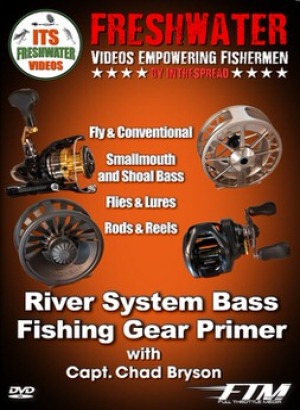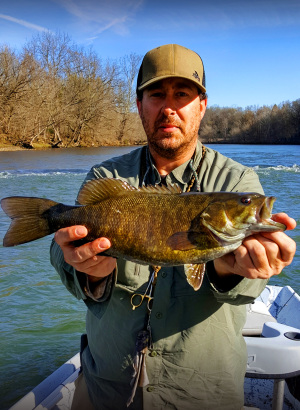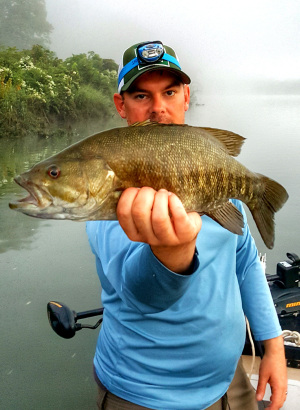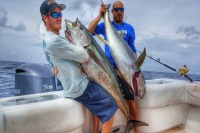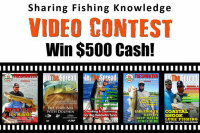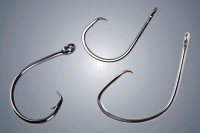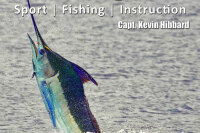Scott Lewis, a fisherman and biologist, shares his expertise in smallmouth bass fishing in Eastern Tennessee. He uses his snorkel to study local aquatic ecology and uses jigs to attract the elusive bass. Lewis also explains the effects of water levels on bass behavior and shares his angling techniques. He also reveals prime bass habitats and boat positioning secrets. Lewis's knowledge can elevate fishing skills and make each trip to the river a new adventure.
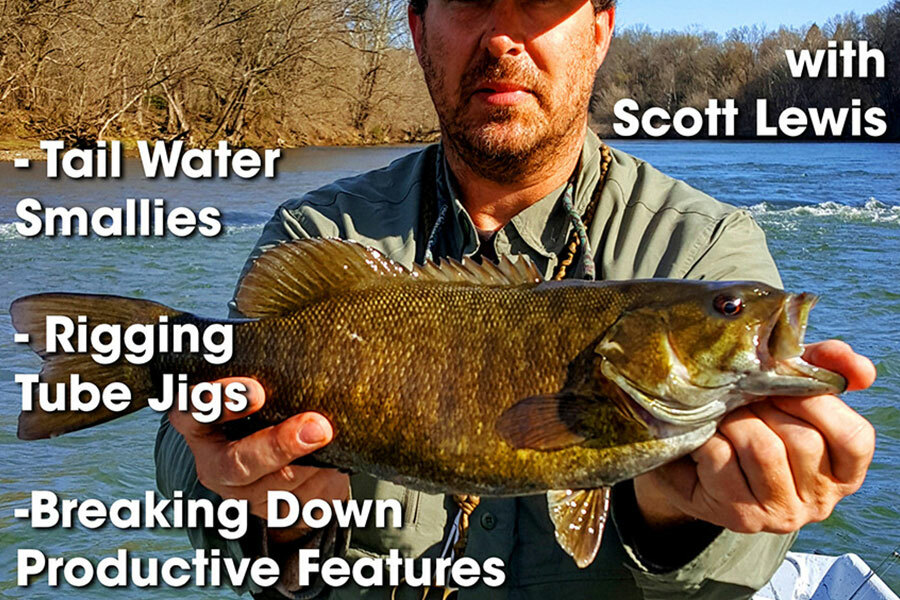
Jigging for Smallmouth Bass
Summary
- Scott Lewis's Approach: Exploration of smallmouth bass behavior through underwater observation.
- Jig Selection: Importance of choosing the right jigs to mimic natural prey of smallmouth bass.
- River Dynamics: Understanding the impact of water levels and flow on bass behavior.
- Fishing Techniques: Tips on using tube jigs effectively in various river habitats.
- Habitat Exploration: Identifying key fishing spots like ledges, seams, and eddies.
- Angling Strategies: Insights into boat positioning, lure presentation, and common fishing mistakes.
- Environmental Appreciation: Emphasis on the importance of respecting and understanding the aquatic ecosystem.
In the realm of fishing, there's a unique pleasure and challenge that comes with targeting smallmouth bass, a species known for its fighting spirit and elusive nature. Among anglers, the art of jigging for smallmouth bass has become a coveted skill, combining the thrill of the catch with the subtlety of technique. This article delves into the intricate world of smallmouth bass fishing, offering insights from Scott Lewis, a biologist and experienced fisherman, who has turned the rivers of Eastern Tennessee into his research lab and fishing paradise.
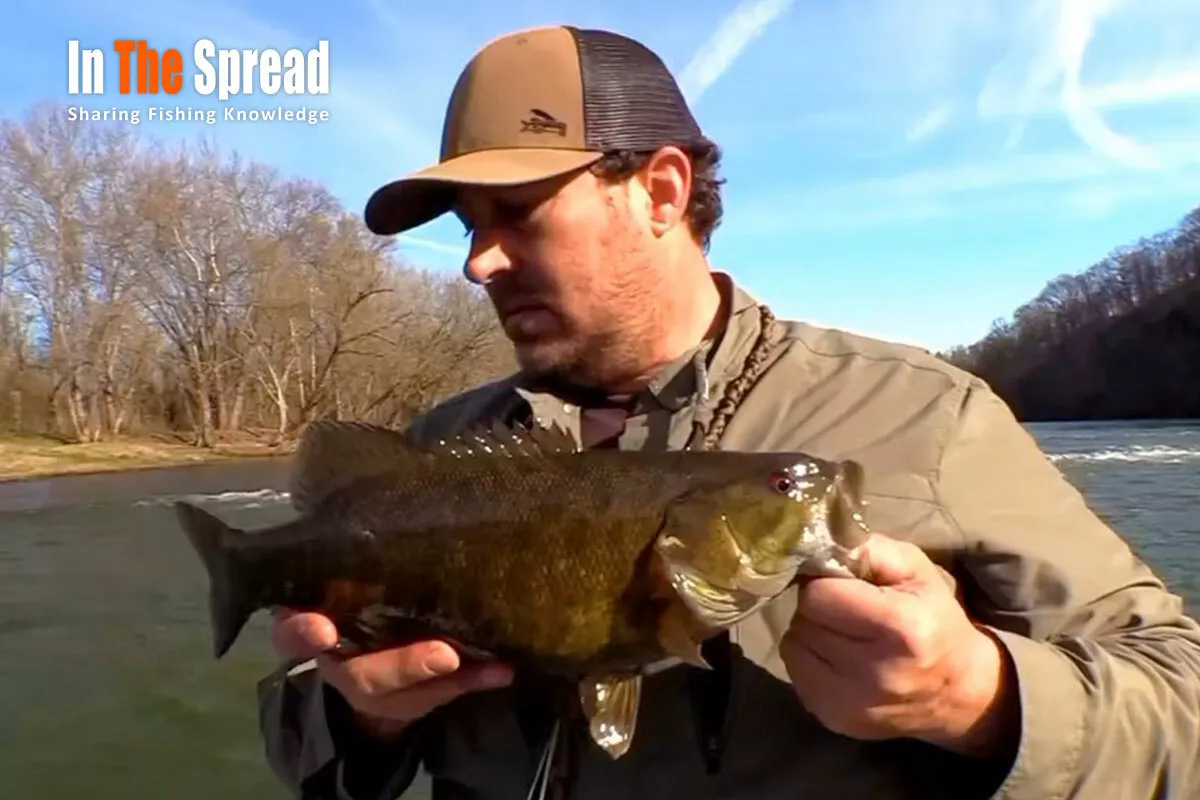
Understanding Smallmouth Bass through Observation
Scott Lewis's approach to fishing is deeply rooted in his passion for biology and ecology. He spends countless hours snorkeling in rivers, observing the behavior of smallmouth bass in their natural habitat. This underwater exploration allows him to study the fish's diet, including the insects, baitfish, and crustaceans that make up their primary food sources. This knowledge is crucial for selecting the right kind of jigs, as imitating these natural prey items can significantly increase the chances of a successful catch.
The Art of Choosing the Right Jig
When it comes to jigging for smallmouth bass, the choice of lure is paramount. Lewis advocates for the use of tube jigs, which are particularly effective in mimicking the smallmouth bass's natural prey. The shape, size, and color of the jig should closely resemble the insects and crustaceans found in the river, making them irresistible to the bass. The versatility of tube jigs also allows anglers to adapt to different fishing conditions and habitats.
River Dynamics and Bass Behavior
An understanding of river dynamics is essential for successful smallmouth bass fishing. Water levels and flow, often influenced by dams, can dramatically impact the behavior of smallmouth bass. Lewis likens these changes to the gravitational forces that affect celestial bodies, emphasizing the importance of adapting fishing strategies to these environmental factors. By understanding how bass move and feed in different conditions, anglers can increase their chances of a successful catch.
Techniques for Effective Jig Fishing
Lewis shares several techniques for using tube jigs effectively.
One of the key strategies involves presenting the lure in areas of high activity, such as near shoals or ledge areas. This technique requires precision and a deep understanding of the river's topography. Anglers need to be mindful of the risk of getting snagged on rocky riverbeds while ensuring their jigs reach the most promising fishing spots.
Exploring Prime Habitats for Smallies
Identifying the best habitats for smallmouth bass is crucial. Lewis highlights areas like ledges, seams where fast water meets slow, the bottom ends of islands, and slack water eddies as prime spots for smallmouth bass fishing. Each of these habitats presents unique challenges and opportunities, requiring different approaches and techniques. For example, fishing in fast-moving seams demands a different approach than fishing in quiet, slack water eddies.
Angling Strategies and Insights
Effective smallmouth bass fishing involves more than just casting a line. Lewis emphasizes the importance of boat positioning, lure presentation, and understanding common mistakes. For instance, presenting a jig in a way that mimics natural prey movement can be the difference between attracting a bass or going unnoticed. Similarly, positioning the boat for optimal casting angles and drifts can significantly improve the chances of success.
The Bigger Picture: Environmental Appreciation
Lewis's journey is not just about catching fish; it's also about appreciating and understanding the river's ecosystem. His approach encourages anglers to respect the aquatic environment and recognize their role in preserving it. By understanding the ecosystem, anglers can become more responsible stewards of the waterways, ensuring that the joys of smallmouth bass fishing can be enjoyed by future generations.
Conclusion
Jigging for smallmouth bass is more than a fishing technique; it's an art that combines ecological knowledge, skill, and respect for nature. Scott Lewis's insights and strategies offer a comprehensive guide for anglers looking to master this challenging and rewarding aspect of fishing. With the right approach, every fishing trip can be a journey of discovery, offering both the thrill of the catch and a deeper connection with the natural world.
Embark on your smallmouth bass fishing adventure with the wisdom shared by Scott Lewis. Remember, it's not just about the fish you catch, but the experiences and knowledge you gain along the way. Happy fishing!

